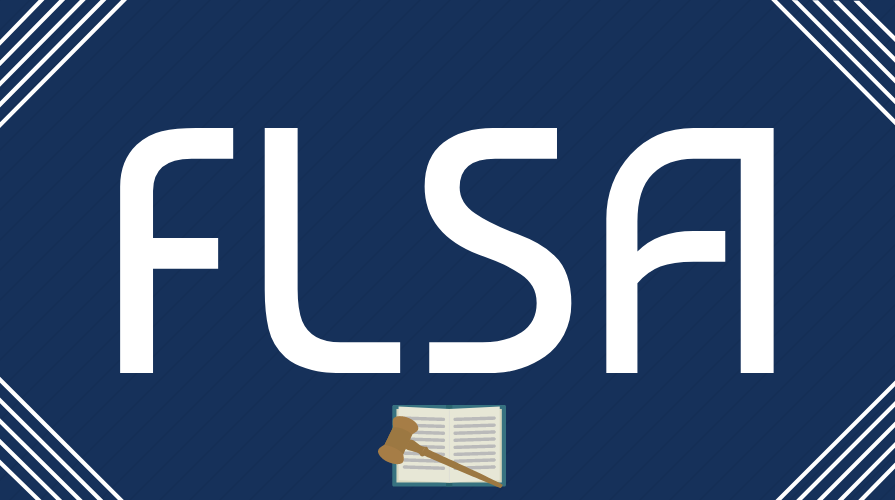FLSA Regular Rate of Pay, Premium Pay, and Additional Payments
In December 2019, the Department of Labor (DOL) issued final rules updating regulations governing the regular rate requirements under the Fair Labor Standards Act (FLSA). The rules clarify what types of pay must be included in the regular rate when calculating overtime and confirm that nondiscretionary bonuses and payments must be included.
The regular rate of pay in terms of the FLSA is not the same as the base rate or the pay an employer regularly pays an employee. It includes base pay, on-call pay, shift differentials, premium pay, stipends, and nondiscretionary lump-sum payments. Employers must use the regular rate as the basis for calculating the overtime premium when a nonexempt employee works over 40 hours in a workweek of seven consecutive days.
Premium Pay
Remember that overtime is only due when a nonexempt employee physically works more than 40 hours in a week. During the COVID-19 pandemic many districts paid hourly employees a premium rate of time-and-one-half for actual time worked. These employees may have also continued to receive their regular rate of pay for remaining hours typically scheduled but not worked due to the pandemic. If an employee receiving a premium rate of pay during closure physically worked more than 40 hours in a week, they would be entitled to overtime based on the premium pay rate. For example:
Regular rate pre-pandemic = $10/hour
Premium pay rate (up to 40 hours/week) = $15/hour
Overtime hourly rate = $22.50/hour
Because paid leave time doesn’t factor into regular rate calculations, employees who received both a premium rate for work performed and their regular rate to be idle during a week would not need to have a blended rate calculated for any overtime worked. Rather, the overtime calculation would still be based on the premium rate for actual time worked.
Impact of Additional Payments on Overtime Calculations
During the 2019–2020 school year some Texas school districts awarded lump-sum payments to employees as a result of the additional funding provided under House Bill 3. These payments are commonly paid once a year (usually in December), but can also be paid twice a year (December and June).
Under the FLSA, the DOL considers this type of payment as non-discretionary, based on the following criteria:
- It was budgeted and approved by the board of trustees during the budget process.
- It was determined at the beginning of the fiscal year.
- Employees reasonably expected to be paid a certain amount.
Regardless of how the district refers to the payment (e.g., bonus, incentive, or reward) it’s still considered a non-discretionary payment and must be included in nonexempt workers’ regular rate for all weeks it was intended to cover. As a result, the district must ensure overtime was properly calculated and may need to recalculate the regular rate used in overtime calculation for those weeks.
In contrast, discretionary bonuses, commonly paid by private sector employers, are unplanned payments that recognize performance after it’s been demonstrated. For example, if an employee does an exceptionally good job on a project, they might receive a payment as a reward. The payment is solely rewarded at the discretion of the employer. These types of bonuses don’t apply to school districts and other public sector employers because they are prohibited from paying discretionary lump-sum payments under state law, as they are considered a gift of public funds.
Other Issues
Except in very limited circumstances, lump-sum payments are not creditable for Texas Teacher Retirement System (TRS) annuity calculations. Detailed information on creditable compensation and compensation not eligible for TRS is available on the TRS website.
Additionally, lump-sum bonuses are taxable, so unless the district is willing to “gross up” the taxable portion of the payment, the amount employees receive will be less than the full amount awarded.
Communication Is the Key
Districts should consider the following issues when paying lump-sum bonuses and provide clear communication to employees that explains:
- Who is eligible to receive the lump sum:
- Full-time—identify number of hours required for full-time status
- Part-time—define minimum and maximum hours of work for eligibility
- Substitutes and temporary employees—if eligible, the minimum number of hours worked to qualify
- Proration based on duty schedule or hours worked:
- 12-month employee vs. 10-month employee
- 8-hour employee vs. 3-hour employee
- Impact of leave on bonus payment:
- Paid leave status vs. unpaid status
Other Resources
In summary, if the district pays a lump sum, it is taxable, may not be considered creditable by TRS, and may result in additional money owed to nonexempt workers in overtime. For more information check the HR Library topic One Time Payments to District Employee (for community colleges, see One Time Payments to College Employees) and the TASB School Law eSource paper Mid-Year Pay Increases of School District Employees.
HR Services

Subscribe to HRX
Stay up to date with all the latest HR news and trends by joining the HRX mailing list!





